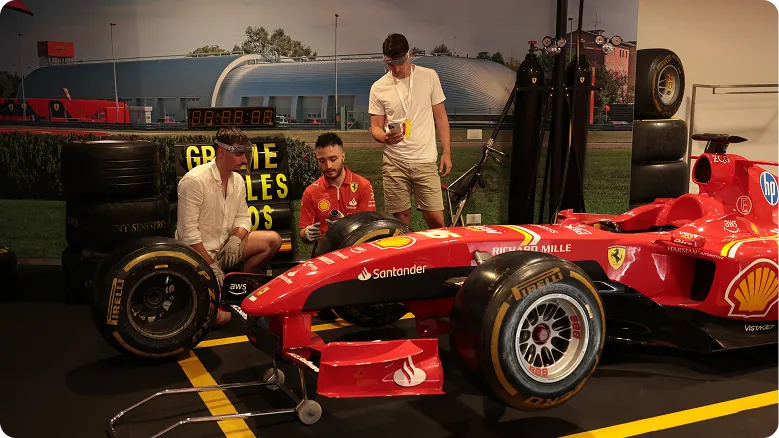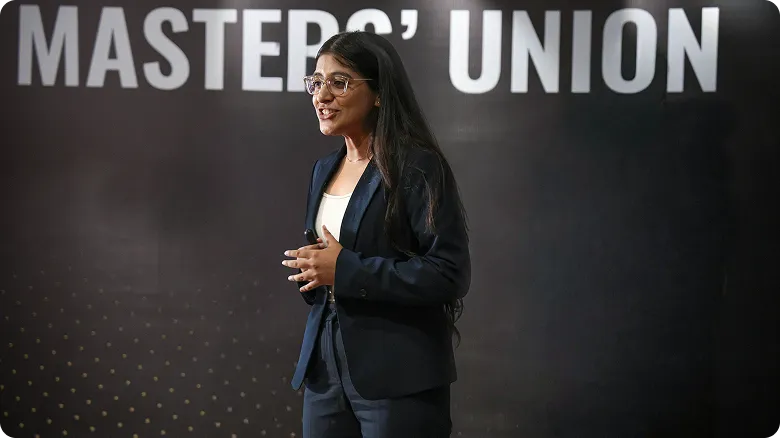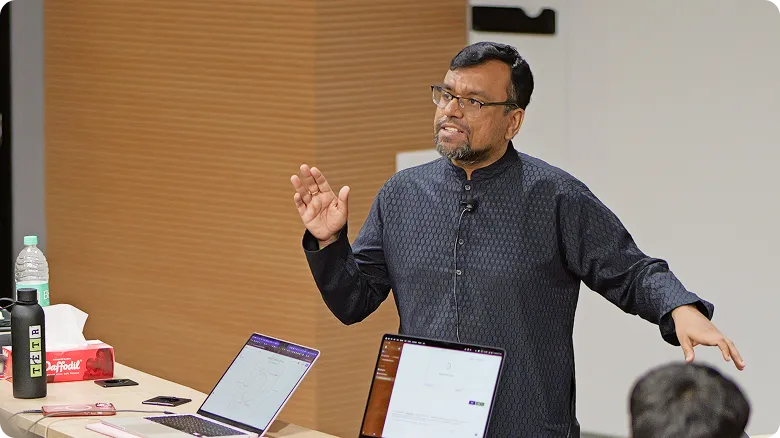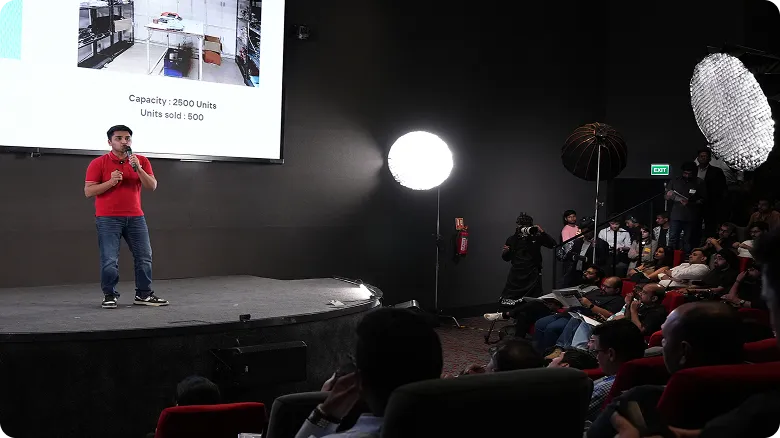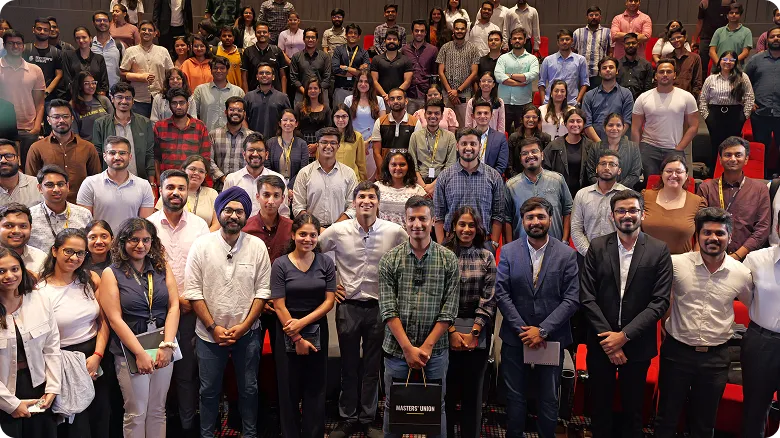Apply to the Shark Tank S5 Campus Special (Open to All Students)
Apply NowUndergraduate
Undergraduate (Global)
Postgraduate
Executive
Family Business
Careers
Innovations
Faculty
MU Ventures
Student Life
Jobs
Become a Master
events
For Companies
Blog
CXO Insights
How Sona Comstar Became a Global Leader in Automotive Components Industry
December 9, 2024
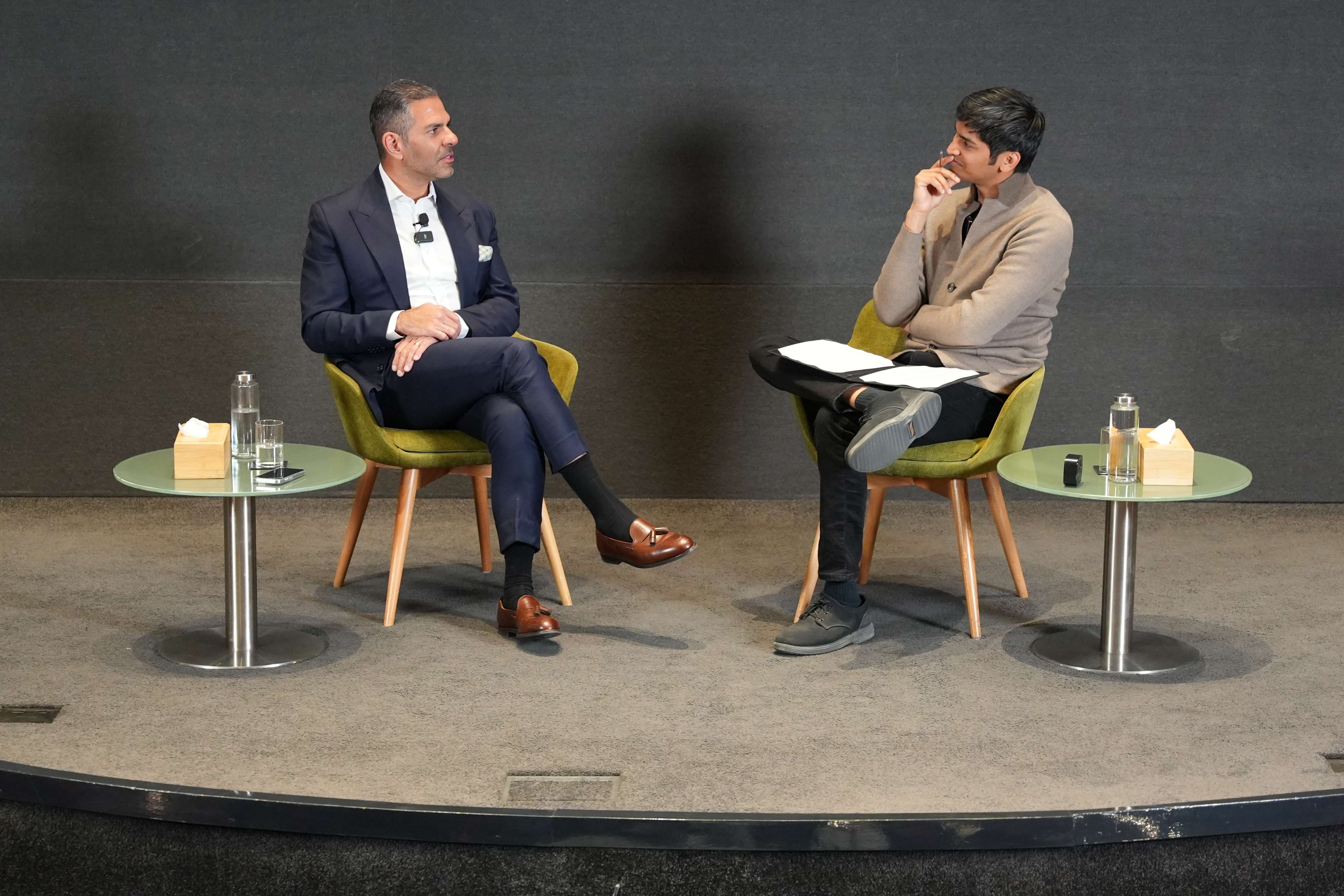
India’s automotive industry has seen remarkable transformation over the past four decades. Once defined by joint ventures and limited domestic production, it has now become a globally competitive sector. At the heart of this journey is Sona Comstar, one of India’s most successful auto-component manufacturers.
In a recent CXO session hosted by Pratham Mittal, Founder & CEO of Masters’ Union, Sunjay Kapur, Chairman of Sona Comstar, shared his perspective on what it takes to build global leadership in automotive components. From leading the world’s largest precision-forged gear manufacturer to tapping opportunities in electric vehicle (EV) technologies, Sona Comstar stands as a benchmark for India’s auto industry on the global stage.
From Joint Ventures to Global Automotive Leadership
The Indian auto-component industry began its serious growth journey in the late 1980s with joint ventures. These partnerships gave Indian firms access to new technologies and global best practices. Over time, however, companies like Sona Comstar moved beyond reliance on collaborations and developed self-sustaining capabilities.
-
Industry challenge: Limited domestic expertise and reliance on foreign partners
-
Sona Comstar’s response: Built in-house R&D capacity and transitioned from dependence on joint ventures to independent innovation
-
Impact: Today, the company supplies six of the world’s top ten car manufacturers and operates plants in India, China, Mexico, and the USA
This journey reflects not just one company’s success but also India’s transition into a credible player in the global automotive components industry.
Technology as the Foundation of Competitiveness
Sunjay Kapur highlighted a simple truth: without continuous investment in technology, competitiveness fades. In the rapidly changing automotive world, technology defines survival and growth.
-
Industry challenge: Rising global competition and demand for advanced auto components
-
Sona Comstar’s response: Prioritised R&D, embraced digital manufacturing, and invested in innovation-led product development
-
Impact: Became the producer of the world’s lightest starter motor and established itself as a technology-first company
For the global automotive ecosystem, Sona Comstar demonstrates how Indian firms can compete not just on cost but also on cutting-edge technology.
The EV Revolution and New Growth Opportunities
One of the central themes of the discussion was the electric vehicle (EV) revolution. The global shift from internal combustion engines (ICE) to electric mobility has opened up new opportunities in the automotive supply chain.
-
Industry challenge: Transitioning from ICE-focused systems to EV-ready components
-
Sona Comstar’s response: Invested early in EV technologies, focusing on driveline solutions, motors, and precision parts for battery electric vehicles (BEVs)
-
Impact: Positioned as a key supplier in the growing EV market in India and internationally, with a product portfolio aligned to future mobility
Kapur noted that while hydrogen fuel cell technology remains under exploration, BEVs are likely to dominate the near future. For Indian component makers, the opportunity lies in aligning with this global shift.
Expanding Global Reach in Automotive Markets
Today, a large share of Sona Comstar’s revenue comes from international clients. The company has built a reputation not only for cost efficiency but also for consistent quality.
-
Industry challenge: Breaking into global supply chains dominated by established players
-
Sona Comstar’s response: Focused on building credibility, maintaining high-quality standards, and leveraging cost advantages
-
Impact: Established strong global partnerships and created sustainable international revenue streams
This story mirrors the broader rise of Indian firms in global automotive markets, where quality and reliability have become as important as cost efficiency.
Regulation as a Catalyst for Innovation
Regulatory requirements are often seen as barriers, but Sunjay Kapur argued the opposite: stringent regulations push companies to innovate.
-
Industry challenge: Meeting safety, emission, and environmental regulations in India and abroad
-
Sona Comstar’s response: Invested in compliance-led innovation and created products that meet international standards
-
Impact: Strengthened its ability to compete globally while ensuring sustainable practices
By turning regulation into an opportunity, Sona Comstar has shown how Indian manufacturers can convert compliance into a competitive edge.
Collaboration Across the Value Chain
Kapur emphasised that no company builds global leadership in isolation. Success in the auto-component industry depends on collaboration between manufacturers, technology providers, and startups.
-
Industry challenge: Fragmented value chains and lack of integration
-
Sona Comstar’s response: Built partnerships across suppliers, OEMs, and technology firms
-
Impact: Created a robust ecosystem capable of driving innovation and efficiency
This collaborative model is also shaping the EV growth in India, as partnerships become essential to scaling new technologies.
Fostering a Culture of Innovation
Beyond technology and partnerships, culture plays a critical role in building leadership. Kapur shared that innovation must be ingrained in the organisation’s DNA.
-
Industry challenge: Talent gaps and resistance to change
-
Sona Comstar’s response: Fostered a culture of innovation, continuous learning, and adaptability
-
Impact: Attracted skilled talent and prepared the organisation for future market shifts
For the next generation of leaders, Kapur’s insight was clear: innovation isn’t just about R&D budgets—it’s about mindset
The Road Ahead for India’s Automotive Industry
The podcast closed with a forward-looking conversation about where India stands in the global automotive industry. With rising EV adoption, increasing global demand for auto components, and a growing emphasis on sustainability, the road ahead is promising.
-
Market potential: Global demand for EV-ready components is surging
-
India’s opportunity: Leverage cost competitiveness and technological innovation
-
Vision for the future: Indian firms like Sona Comstar can redefine their position as global leaders, not just participants
What Students Can Learn from Sunjay Kapur’s Journey
For Masters’ Union students, the discussion was not just about automotive technology but about leadership. Kapur’s story illustrated how execution, innovation, and global vision can transform a company from a local player into a world leader.
-
Global vision matters: Companies must think beyond domestic markets
-
Adapt to change: From ICE to EVs, agility defines success
-
Leadership in action: Strong culture and collaboration drive long-term growth
Final Thoughts
Sona Comstar’s rise is more than a corporate success story. It reflects the broader trajectory of India’s auto-component industry as it transitions from joint ventures to global leadership. For Sunjay Kapur, the formula has been simple yet powerful: embrace technology, invest in people, and think globally.
As shared on the Masters’ Union podcast with Pratham Mittal, this vision for the future underscores the role of Indian firms in reshaping not just local industries but the global automotive landscape.










